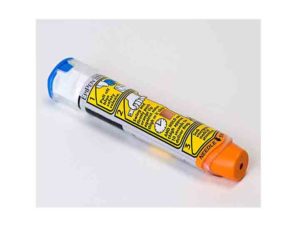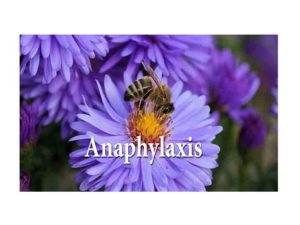Avoidance of the allergen is the most important
Anaphylaxis Causes:
Anaphylaxis is a severe, life-threatening allergic reaction. The term anaphylaxis was first proposed by physiologist Charles Robert Richet and Paul Portier in the year 1902. “Ana” means “against” and “phylaxis” meaning “protection”. Urgent attention is necessary to save the life of the individual who is suffering from anaphylaxis.
Risk factors for Anaphylaxis:
Following are the risk factors for anaphylaxis:
- Previous history of anaphylaxis. If you already had anaphylaxis once, then your chance of having anaphylaxis second times increases. Second time reaction may be more severe.
- Atopy: Atopy is the inherited tendency to develop allergy.
- Gender: Risk of anaphylaxis is more in male under 15 years of age whereas the risk is more in female of more than 15 years of age.
- Allergies or asthma. Those who suffering from asthma or some form of allergic disorder are prone to anaphylaxis.
Incidence and prevalence of Anaphylaxis:
Exact incidence of anaphylaxis is unknown. Anaphylaxis is often underreported, under diagnosed. The lifetime prevalence may be as high as 2 percent.
Anaphylaxis Causes
Food
Food can cause anaphylaxis. These include peanuts, tree nuts, fish, shellfish, cow’s milk, soy products, eggs, wheat.
Insect stings
Stinging insects like honeybees, yellow jackets, fire ants, hornets and paper wasps can cause anaphylaxis. Less commonly, biting insects.
Medication
Medicines like β-lactams like penicillin, Nonsteroidal anti-inflammatory drugs (NSAIDs) like aspirin and ibuprofen Biologic modifier.
Blood transfusion
Blood transfusion can cause mild allergic reaction to severe form of allergy. Anaphylaxis can occur in approx 1 in 20,000 to 1 in 50,000 transfusions.
Natural Rubber Latex
Latex is a common component of many medical and dental supplies including gloves, intravenous tubing, syringes, catheters. Latex is also used in condoms.
Radiocontrast media
Allergy reactions to IV dye can occur ranging from mild to moderate reaction to more severe life-threatening anaphylatic reaction.




